Krakow
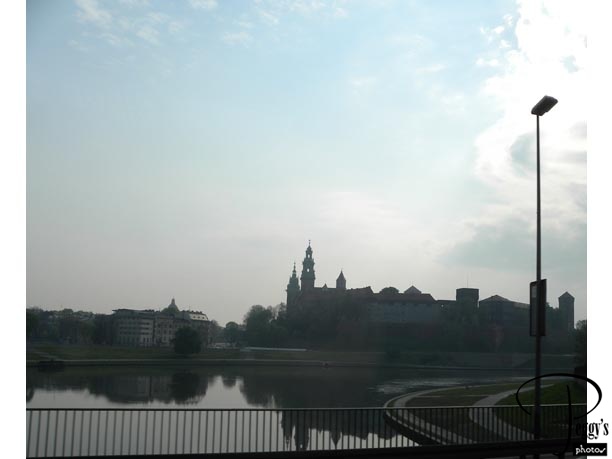
This morning we took a tour of Krakow. Photo: Wawel Castle seen from our bus.

Krakow
Krakow

Another view of Wawel Castle. We would visit it later.

Krakow
Krakow

A church seen from our bus.

Krakow
Krakow
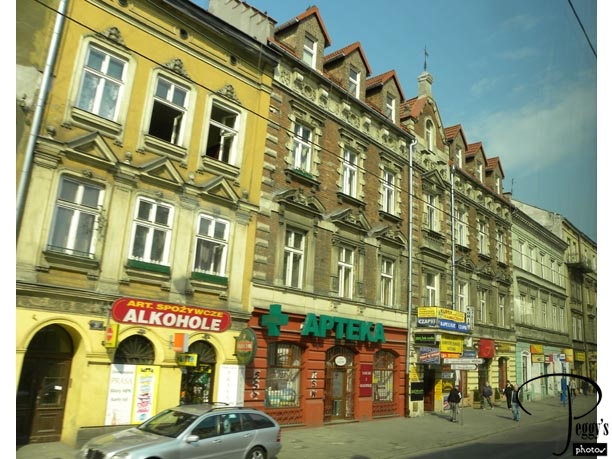
A Krakow street.

Krakow
Krakow
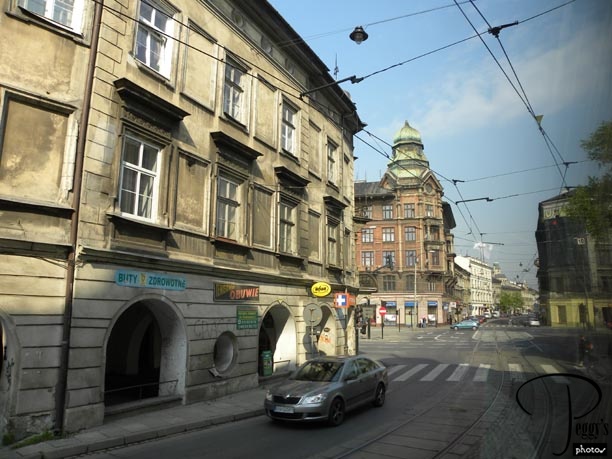
Old buildings.

Krakow
Krakow
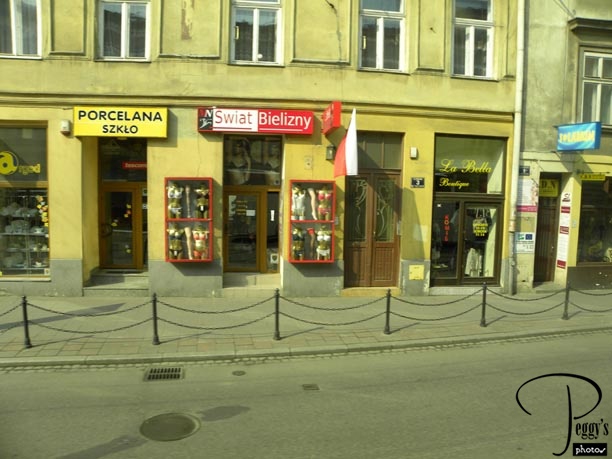
Stores.

Krakow
Krakow
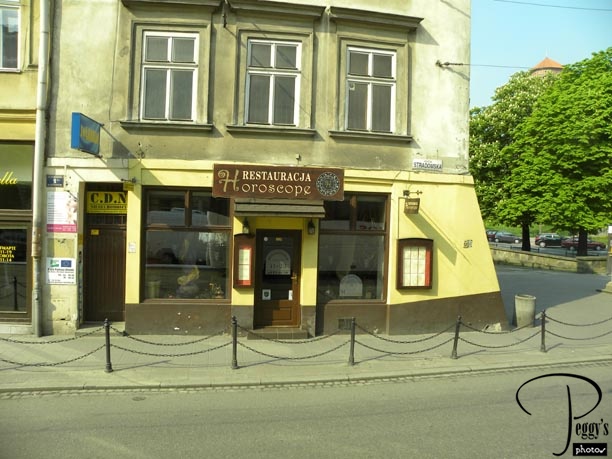
A horoscope restaurant.

Krakow
Krakow
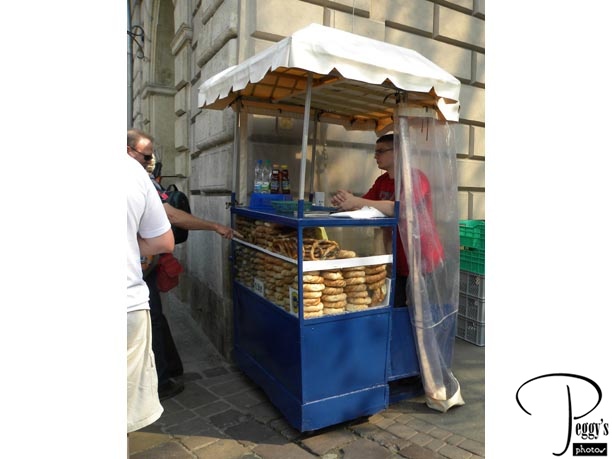
Sidewalk vendor.

Krakow
Krakow

Our local Krakow guide.

Krakow
Kazimierz Section of Krakow
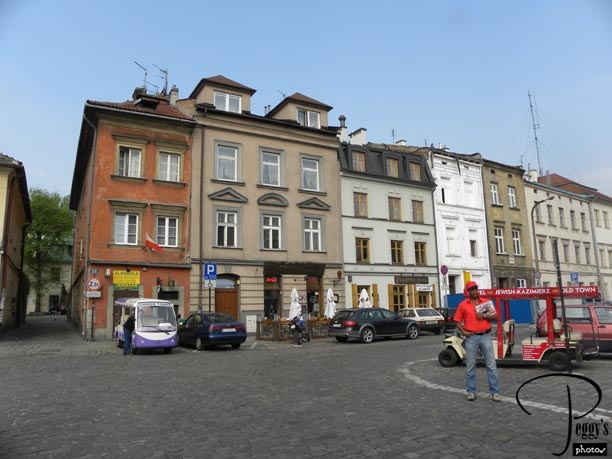
We visited the Kazimierz Jewish section of Krakow. Before World War II, 65,000 Jews lived in Krakow. The Nazis deported almost all of them to concentration camps. Part of the movie “Schindler’s List” was filmed here. Today, Kazimierz has many restaurants and nightclubs and is jumping at night.

Kazimierz Section of Krakow
Kazimierz Section of Krakow
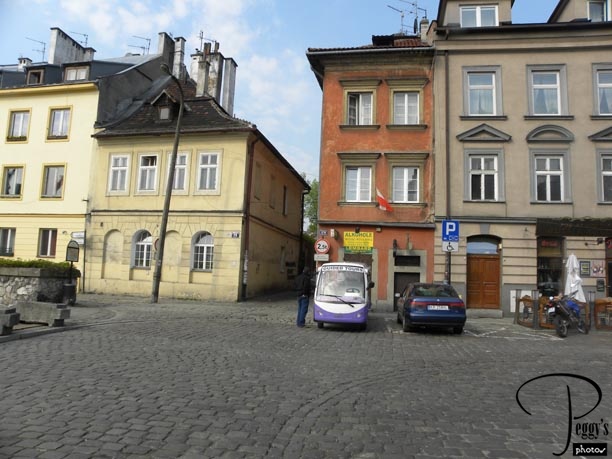
More of Kazimierz.

Kazimierz Section of Krakow
Kazimierz Section of Krakow
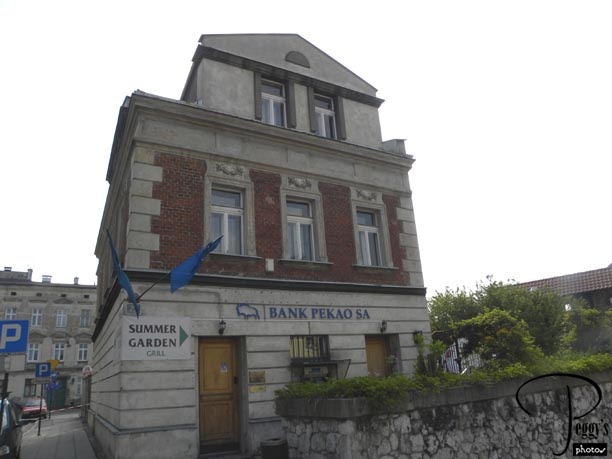
The Bank Pekao SA.

Kazimierz Section of Krakow
Kazimierz Section of Krakow
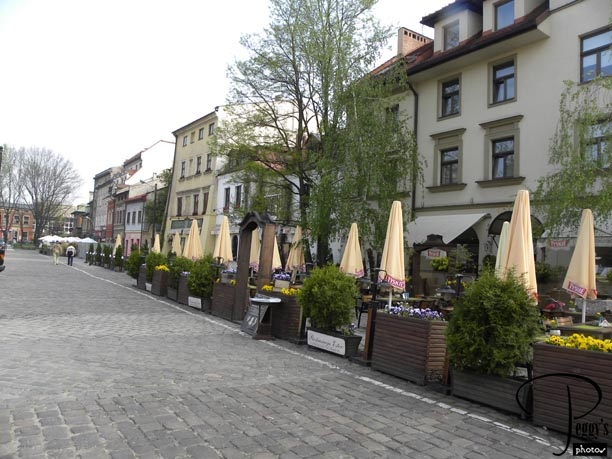
A row of restaurants.

Kazimierz Section of Krakow
Kazimierz Section of Krakow
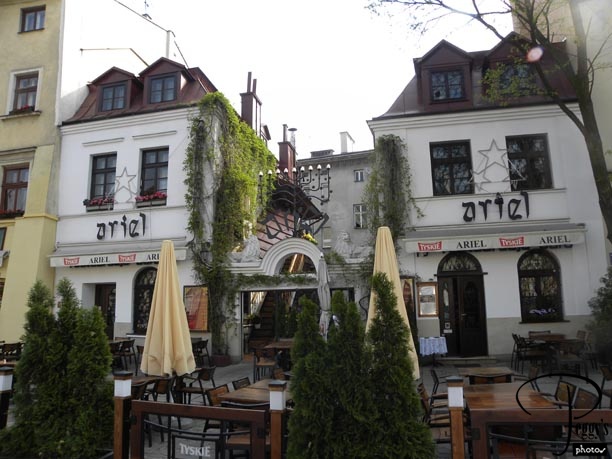
The Ariel Restaurant.

Kazimierz Section of Krakow
Kazimierz Section of Krakow

The Ariel’s fancy menora.

Kazimierz Section of Krakow
Kazimierz Section of Krakow
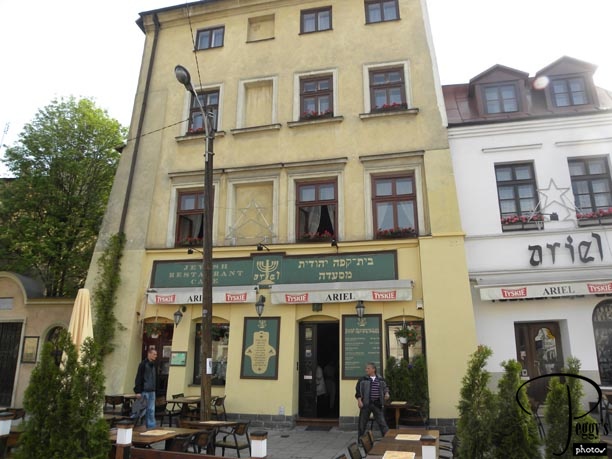
A building next to the Ariel.

Kazimierz Section of Krakow
Kazimierz Section of Krakow

The Legless Sheep Club is in this building.

Kazimierz Section of Krakow
Kazimierz Section of Krakow
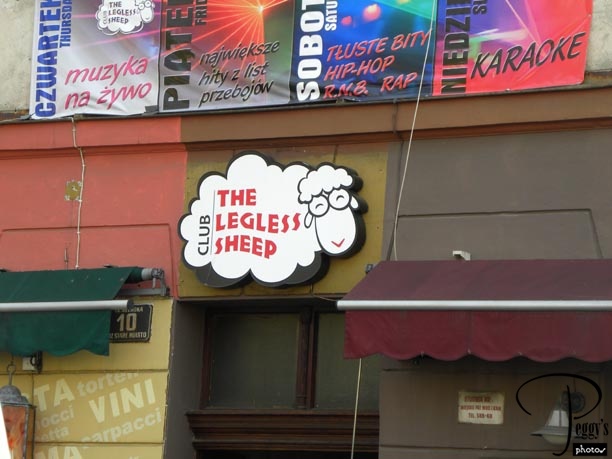
The Legless Sheep.

Kazimierz Section of Krakow
Kazimierz Section of Krakow
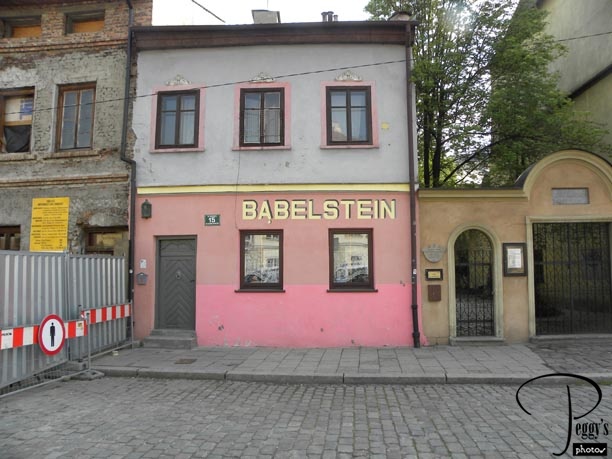
Helena Rubinstein was born in Krakow on Christmas Day, 1870. She lived in this house while growing up.

Kazimierz Section of Krakow
Kazimierz Section of Krakow
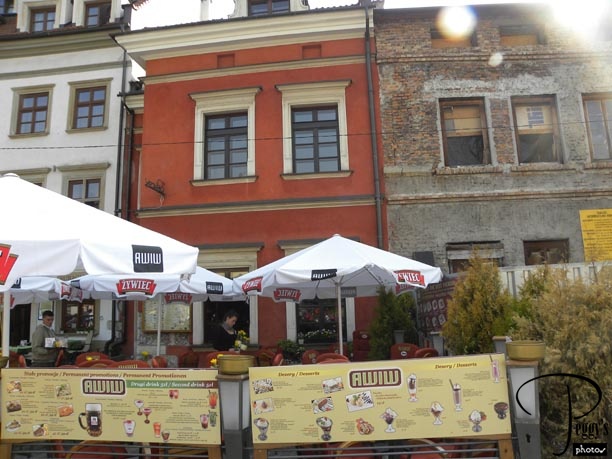
The Awiw Restaurant with its menu on boards in front of it.

Kazimierz Section of Krakow
The Awiw Restaurant’s Menu
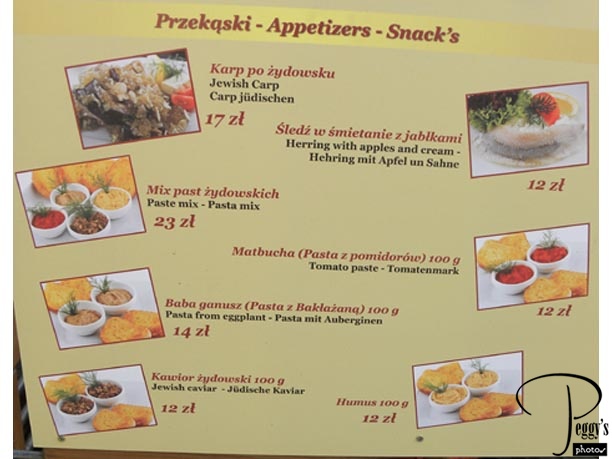
If you are someone who likes to try new dishes, you’ll like this restaurant. From the appetizer selection, Jewish carp and Jewish caviar.

The Awiw Restaurant’s Menu
The Awiw Restaurant’s Menu
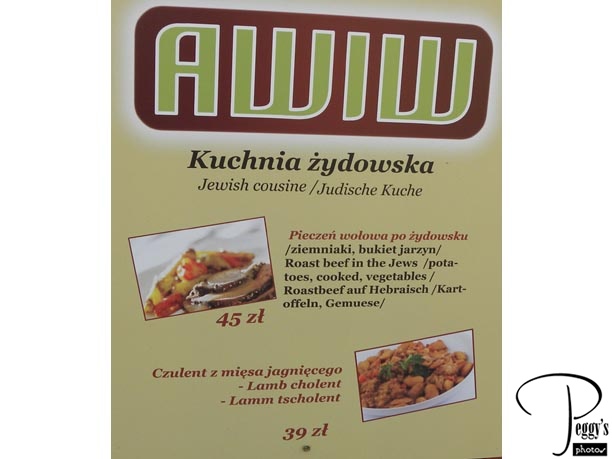
From the Jewish cuisine menu, roast beef in the Jews. I’m pretty sure they made this name up for effect.

The Awiw Restaurant’s Menu
The Awiw Restaurant’s Menu
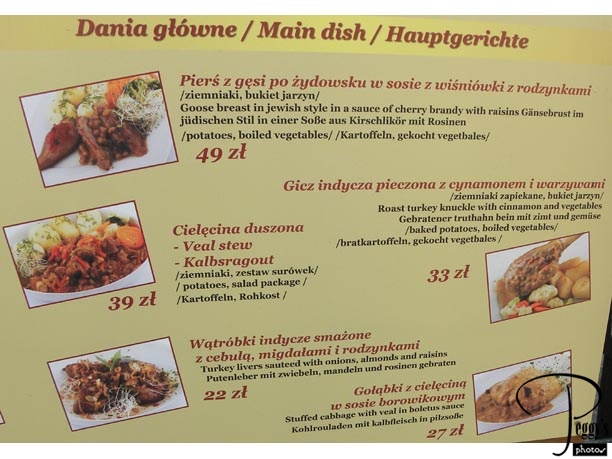
From the main dish menu, goose breast in Jewish style in a sauce of cherry brandy with raisins and roast turkey knuckle.

The Awiw Restaurant’s Menu
The Awiw Restaurant’s Menu
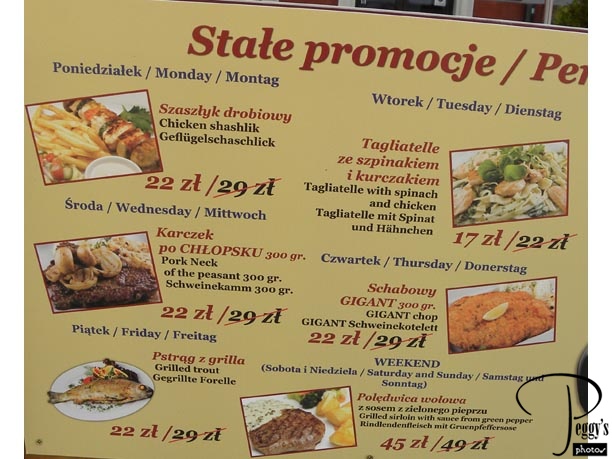
Wednesday’s daily special, pork neck.

The Awiw Restaurant’s Menu
The Awiw Restaurant’s Menu

Tuesday’s special drinks, Now Poland and Mad Dog.

The Awiw Restaurant’s Menu
The Awiw Restaurant’s Menu
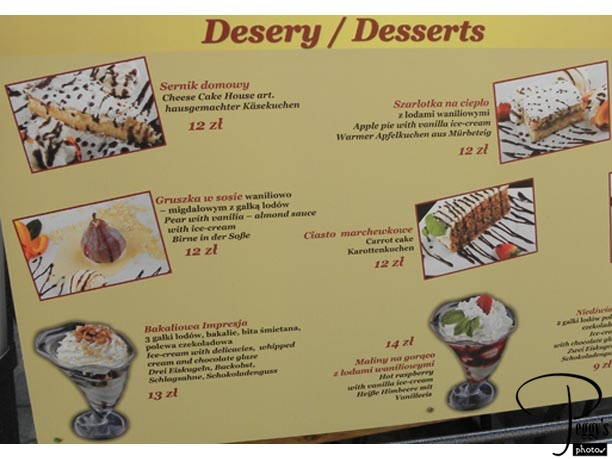
Their desserts: they all look good to me.

The Awiw Restaurant’s Menu
The Awiw Restaurant’s Menu
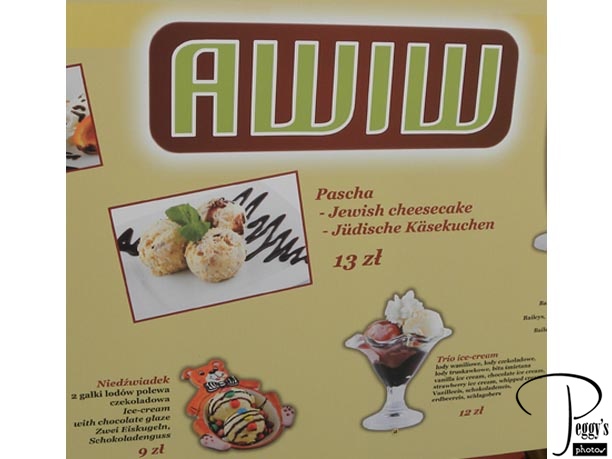
More desserts. I really would like to try their Jewish cheesecake.

The Awiw Restaurant’s Menu
Kazimierz Section of Krakow
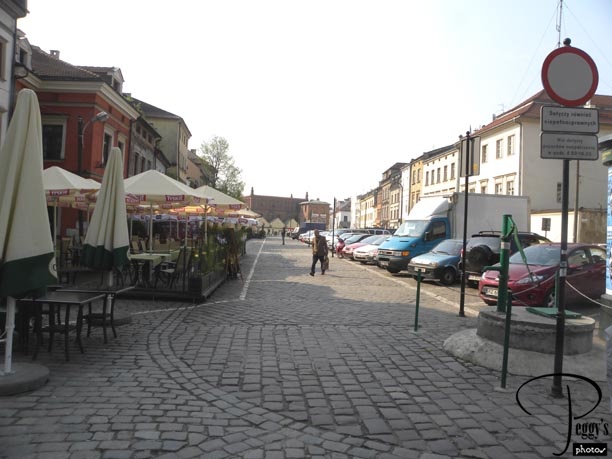
Looking backward at the restaurants.

Kazimierz Section of Krakow
Kazimierz Section of Krakow
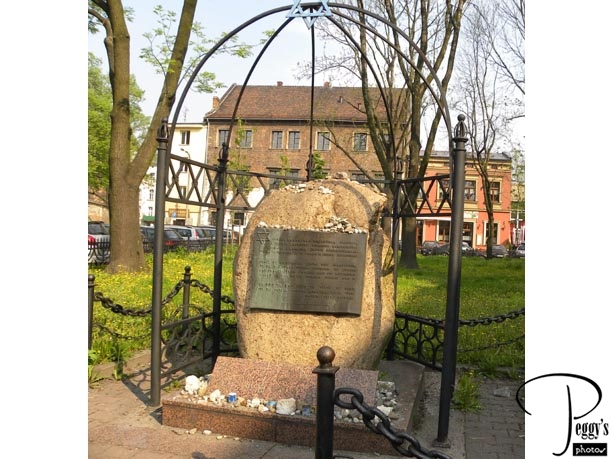
The plaque reads: “A place of meditation upon the martyrdom of 65 thousand Polish citizens of Jewish nationality from Cracow and its environs killed by the Nazis during World War II.”

Kazimierz Section of Krakow
Kazimierz Section of Krakow

A menora fence.

Kazimierz Section of Krakow
Kazimierz Section of Krakow
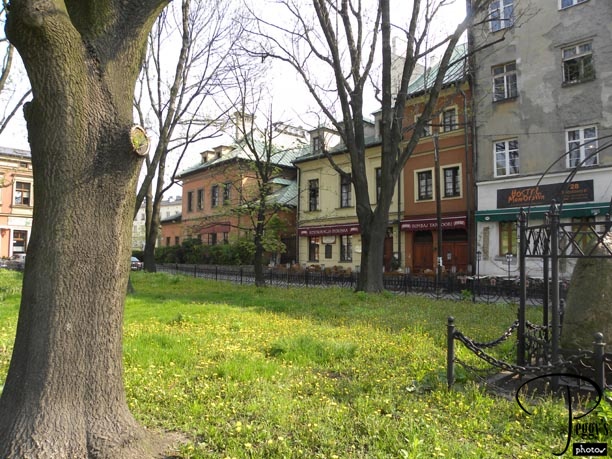
The buildings facing the park.

Kazimierz Section of Krakow
Kazimierz Section of Krakow
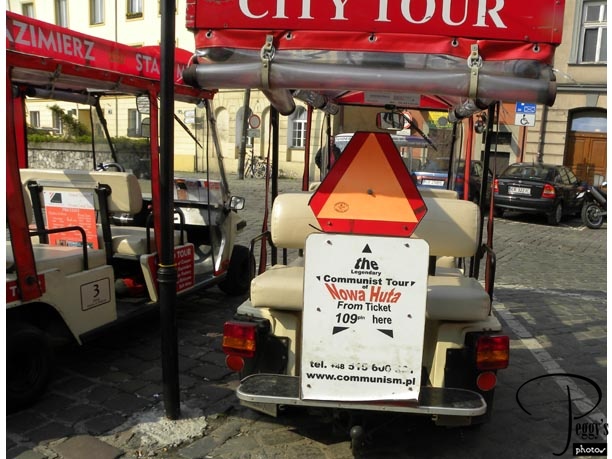
Tour trams are lined up here to take you to see other sites in Krakow. This one offers a “communist tour.”

Kazimierz Section of Krakow
Podgorze Section of Krakow
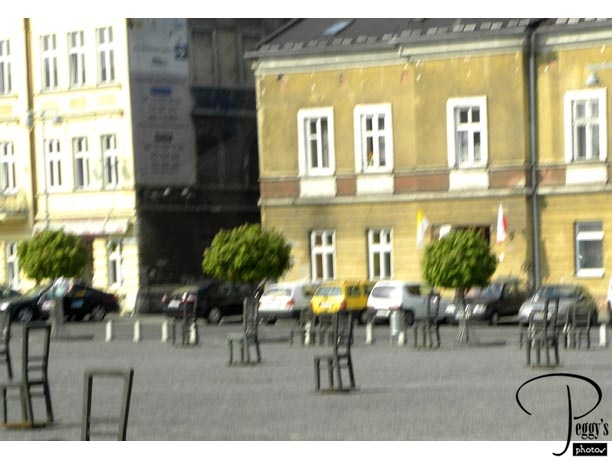
Podgorze was a large Jewish section before World War II. Oskar Schindler’s factory was located here and you can visit it. The photo is of the Ghetto Heroes Square. It is on this square where the Jews waited to be sent to the concentration camps. The memorial consists of 70 empty chairs, which symbolizes the old furniture that was thrown out of the apartments when the Jews were being deported.

Podgorze Section of Krakow
Wawel Castle (See Slide Show)
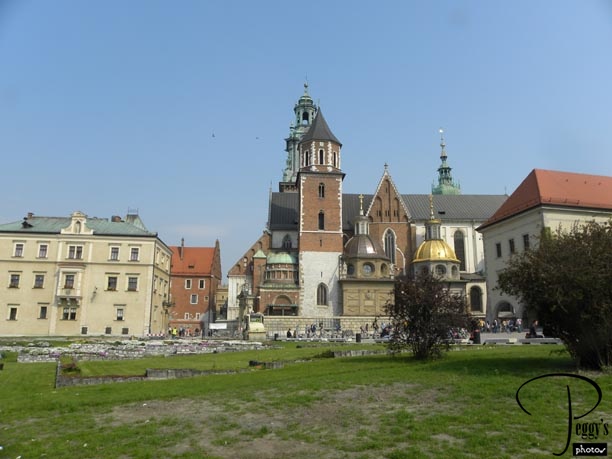
Our next stop was Wawel Castle, begun in the 12th century. Twenty chapels were added at different times and in different architectural styles. The chapels shown in the photo range from 12th–century Romanesque to 18th– and 19th–century Neoclassical with 14th–century Gothic, 17th–century Baroque, and 16th–century Renaissance thrown in. I have put my photos of Wawel Castle on a slide show: Go to Slide Shows, Central/Eastern Europe–1, Wawel Castle, Krakow.

Wawel Castle (See Slide Show)
Krakow’s Old Town
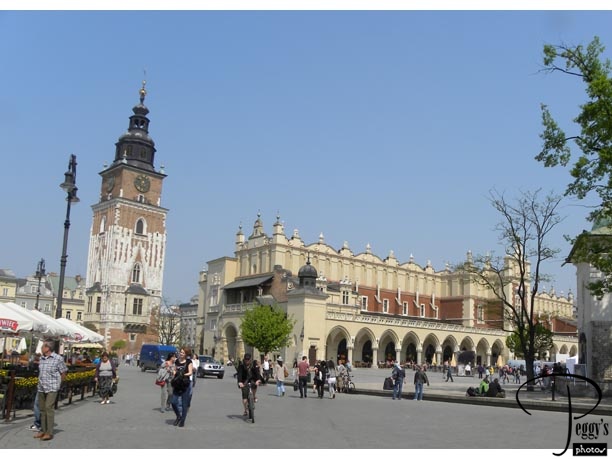
Our next stop was Krakow’s Old Town. The photo is of the Main Market Square with the 13th–century Town Hall Tower on the left and the 16th–century Cloth House on the right.

Krakow’s Old Town
Krakow’s Old Town (See Slide Show)
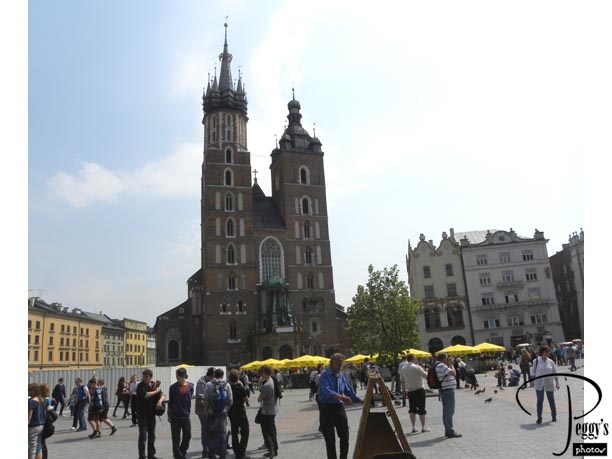
The other main point of interest at the Main Market Square is the 14th–century St. Mary’s Church. I have put my photos of Krakow’s Old Town on a slide show. Go to Slide Shows, Central/Eastern Europe–1, Krakow’s Old Town. I have also put a movie of the trumpeter at St. Mary’s Church––see next item.

Krakow’s Old Town (See Slide Show)
Trumpeter at St. Mary’s Church
The taller steeple of the church is actually a municipal watch tower. A trumpeter plays an hourly hejnal song which is left unfinished. During the first Tatar invasion of Krakow, a watchman on the tower saw the Tatars approaching and blew the alarm on his trumpet. But before he could finish, his throat was pierced by an arrow. Hence, why the hejnal stops in mid–tune. A group of 12 firemen rotate in blowing the trumpet.

Trumpeter at St. Mary’s Church
Old Town Musicians
We passed these musicians on the way to the bus, so I didn’t have time to take a longer video of them.

Old Town Musicians
Grunwald Monument
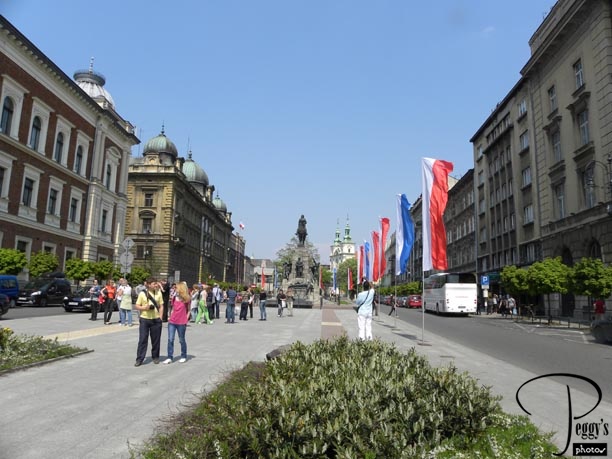
We also passed the Grunwald Monument from 1910 on the way back to the bus. 1910 was the 500th anniversity of the Battle of Grunwald in which the Teutonic Knights were beaten by forces from Poland, Lithuania, and their allies.

Grunwald Monument
Grunwald Monument
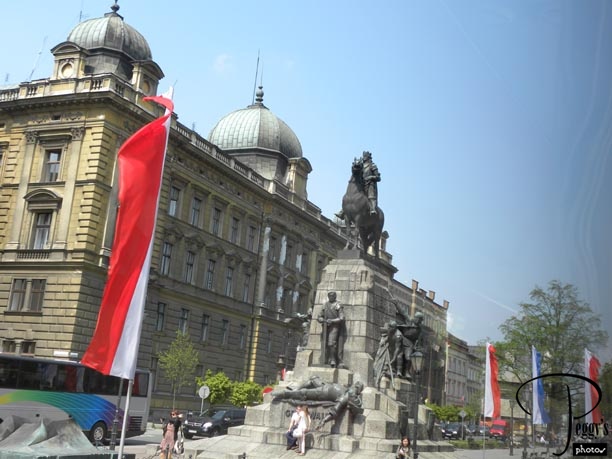
Closer–up of the monument.

Grunwald Monument
Grunwald Monument

The horse and rider.

Grunwald Monument
Grunwald Monument
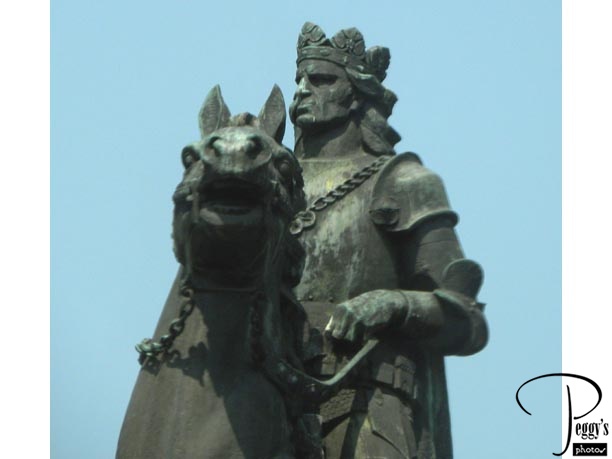
Close–up.

Grunwald Monument
Grunwald Monument
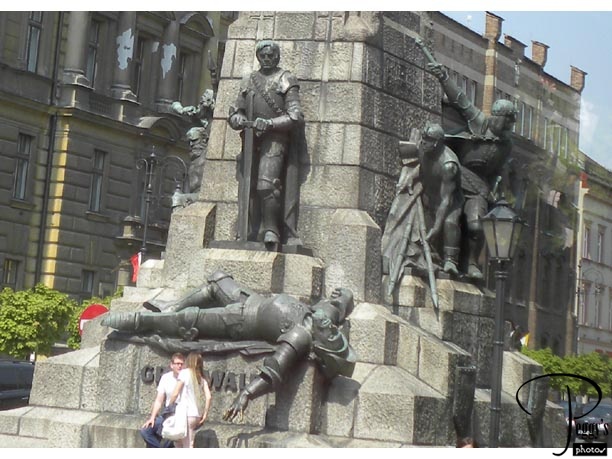
Another close–up.

Grunwald Monument
On the Way to the Wieliczka Salt Mine
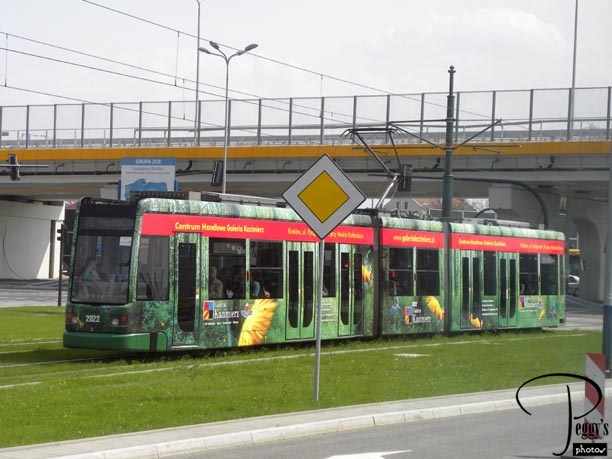
Our next stop was to be the Wieliczka Salt Mine, outside of Krakow. Photo: Seen along the way.

On the Way to the Wieliczka Salt Mine
On the Way to the Wieliczka Salt Mine
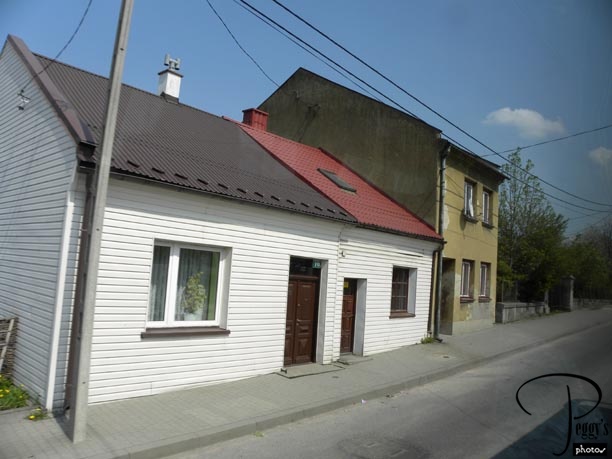
Houses almost on the roadway.

On the Way to the Wieliczka Salt Mine
On the Way to the Wieliczka Salt Mine
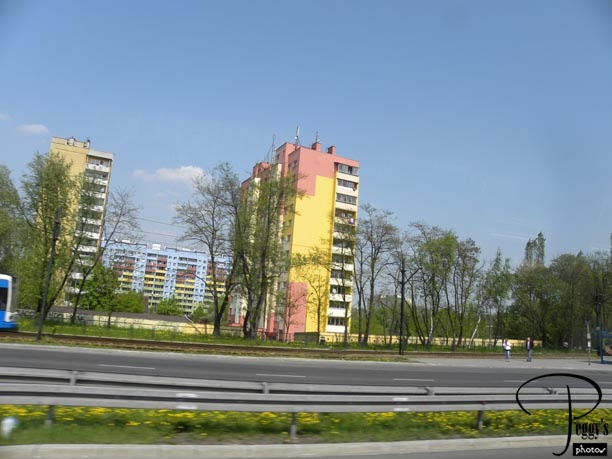
Apartment houses.

On the Way to the Wieliczka Salt Mine
On the Way to the Wieliczka Salt Mine
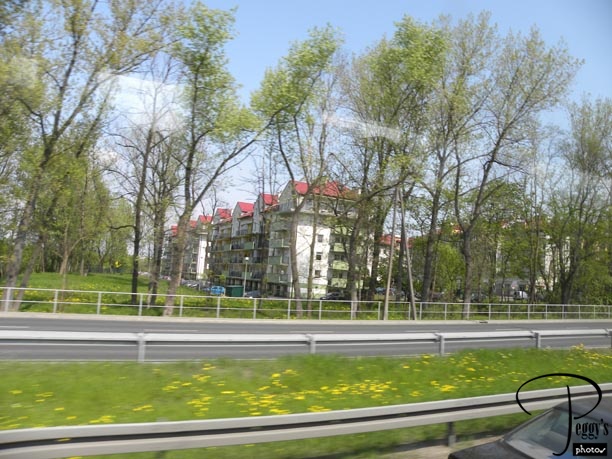
More apartment houses.

On the Way to the Wieliczka Salt Mine
On the Way to the Wieliczka Salt Mine
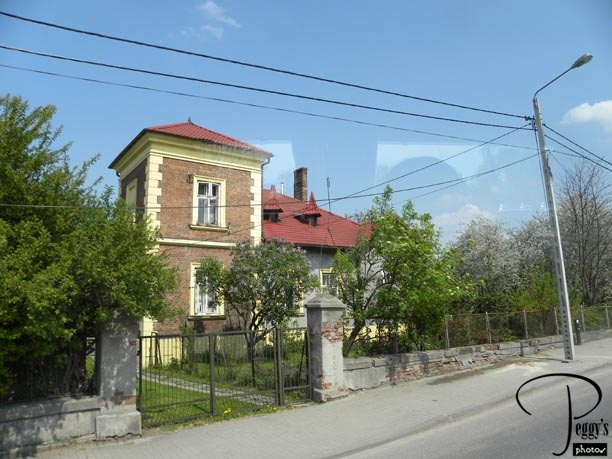
An interesting house.

On the Way to the Wieliczka Salt Mine
Wieliczka Salt Mine (See Slide Show)
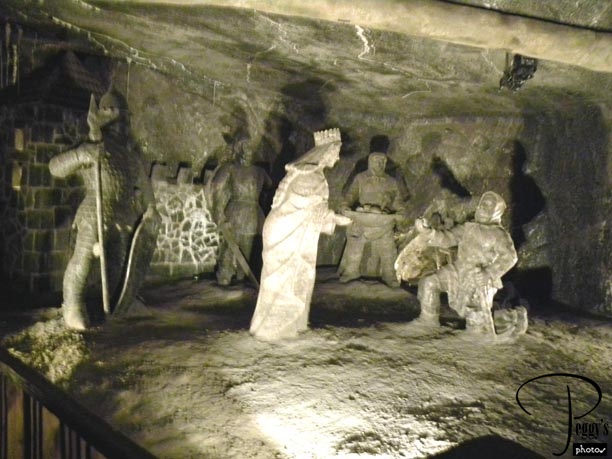
We took a tour to the Wieliczka Salt Mine, traveling 135 feet (64 meters) below the surface of the earth to view the figures carved in salt. Photo: Some of the salt sculptures. I have put my photos of the salt mine on a slide show: Go to Slide Shows, Central/Eastern Europe–1, Wieliczka Salt Mine.
Our tour group was divided into two. When the first group, which I was in, made it happily back to the earth’s surface, it was heavily raining, complete with thunder and lightning. Many of us forget to take our umbrellas (me included) and got soaked walking back to the bus. I remembered to take my umbrella after this.

Wieliczka Salt Mine (See Slide Show)
Dinner
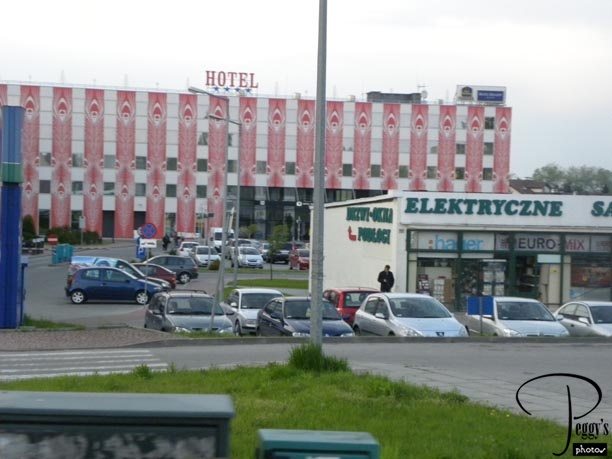
Some of our tour braved the rainy weather and went back to Krakow’s Old Town for dinner. They said there still was a crowd there. Most of the rest of us ate dinner at the Holiday Inn next door to our hotel. Two of us ordered “chicken marinated in lovage and honey.” We were a bit suspicious of that lovage and asked the waiter what it was. He said the word cannot be translated. The dish was very good, lavage and all. I looked up “lavage” on the Internet later: lavage is a European plant used as a herb, seeds, or a vegetable. I would assume that the herb was used in our meal.
There is much to see in Krakow. We were only here for two nights and one day. On a visit of three or four days, your time would be well occupied. Tomorrow we would drive through Slovakia to Budapest, Hungary.
